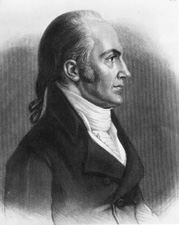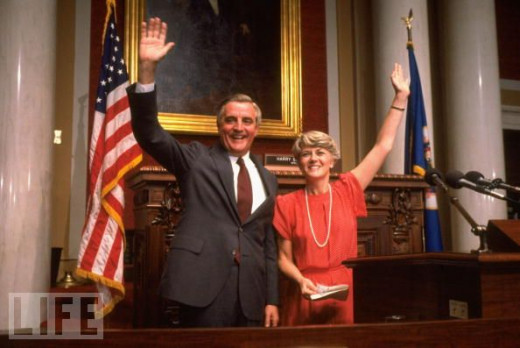How Much Do You Know About Losing Vice Presidential Candidates?
Losing V.P.s



Whatever happened to whatshisname?
Who remembers presidential candidates who didn’t win? How far back can you remember?
Nixon lost to Kennedy. Who was Nixon’s running mate in that campaign? Henry Cabot Lodge. Who?
I’ll wager that would be most folk’s response to the question for any losing side of an election for president. It’s hard enough to remember past winners, even past candidates who lost at the top of the ticket. But the losing running mate? What names stand the test of time?
The first campaign in America for our executive office was won by the ticket of George Washington and John Adams. Thomas Jefferson and Aaron Burr lost that one, but Jefferson went on to win after Washington served two terms and Adams served one. Adams won with Jefferson as his Vice President, then they reversed the top of the ticket and Jefferson won with Adams as V.P. Jefferson won a second term and picked up Adams’ losing VP, Charles Cotesworth Pinckney, who served in that position for two terms, one with Jefferson and one with his successor James Madison. Madison’s second term replaced Pinckney with De Witt Clinton. It appears in the early days of the republic one became Vice President in a process not unlike musical chairs.
In fact, the elections of 1789, 1792, 1796, and 1800 were decided by the presidential candidate who received the second most Electoral College votes being declared the vice president. Makes you wonder why someone vying for the Oval Office (not that there was one in those days) would even bother to name a running mate? Can you imagine what the 24-hour news cycle would do with a president from one party and a vice from another? The election of 1804 was the first one in which the electors voted for president and vice president on separate ballots.
The first losing vice presidential candidate, Aaron Burr in 1796, is one of the most memorable for a reason unique to history, though it is a scenario many in politics would like to put into practice quite often. He’s known for calling out a political enemy for a duel. The other guy, his nemesis going all the way back to their fathers, Alexander Hamilton, lost.
The prospects for a losing vice presidential pick are so discouraging; you have to wonder how they get anyone to take the bait. They say power is the ultimate aphrodisiac. That must be the only thing that works. Still, when the proposal (or proposition) was made to Daniel Webster in 1839, he probably said it best. “I do not propose to be buried until I am dead.”
William Jennings Bryan and Adlai E. Stevenson are a well-known losing ticket in 1900 for inventing the national campaign tour. Before them, candidates sought the office of the presidency while staying in their home, usually in Washington.
Only one VP on a losing ticket later became President. Franklin Delanor Roosevelt, who was James Cox's vice presidential choice in 1920, went on to be elected president — 12 years later.
George McGovern in 1972 named two V.P. candidates for his campaign when Thomas Eagleton left the ticket after being exposed for having received hospitalized treatment for depression. Sargent Shriver joined the ticket in time to be on the losing side.
Two losing vice presidential nominees went on to later become his party's nominee at the top of the ticket. The first: Bob Dole was Gerald Ford's running mate in 1976. Dole did not become the Republican presidential nominee until his third try, when he lost to Bill Clinton in 1996. The second was Walter Mondale who was both the winning V.P. on the ticket with Jimmy Carter in 1976 and the losing V.P. candidate on the ticket with Carter in 1980. He was his party's presidential nominee in 1984 and selected Geraldine Ferraro, a congresswoman from New York, to be the first female vice presidential nominee for a major party. For his trailblazing efforts, he lost 49 states to re-elect Ronald Reagan.
John McCain chose then Governor Sarah Palin of Alaska as his running mate for the 2008 election. She found it to be such a choice opportunity, a state governship paled in comparison. In spite of losing the election for the nation's second highest office, she went on to resign her day job. Good luck to the next female who runs for CEO of Alaska.
A footnote to history is a fitting label for the men - and two women - who have thrown their hats into the ring and come out losers. The way our political realities work in America, that is one label it is very hard to live down.
The exception to the "losers rule" may be Rep. Paul Ryan (R-Wisconsin) who ran as V.P. on Mitt Romney's ticket in 2012. Not only did he return to the U.S. House after the defeat, but he is about the be voted in as its next Speaker. It appears, at this date, that he welds enough power to make retaining time with his family as an absolute before accepting the nomination. We'll see.
Sincere thanks to several hubbers who served as fact checkers for this hub. That effort is always appreciated.








